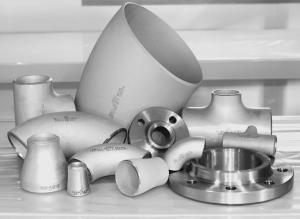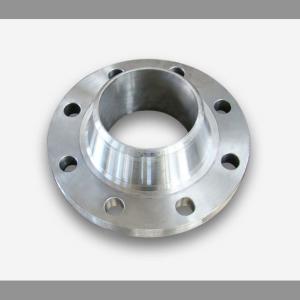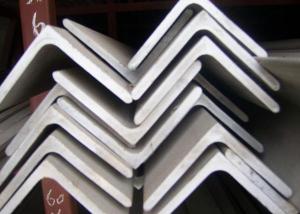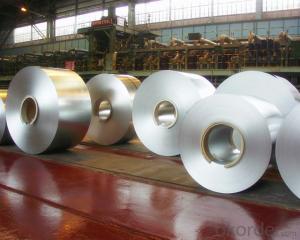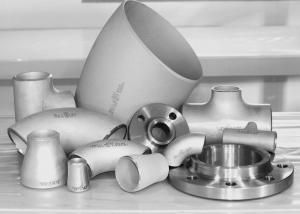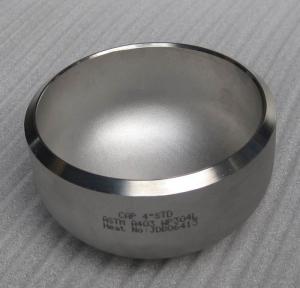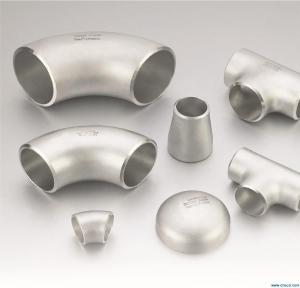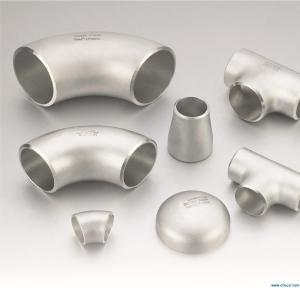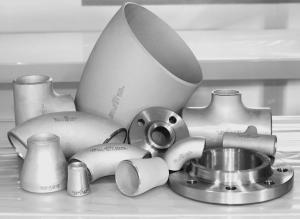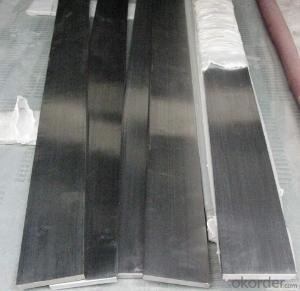Stainless Steel Slip-on Welding Flanges
- Loading Port:
- China Main Port
- Payment Terms:
- TT or LC
- Min Order Qty:
- 5 Pieces pc
- Supply Capability:
- 10000 Pieces Per Month pc/month
OKorder Service Pledge
OKorder Financial Service
You Might Also Like
Stainless Steel Fittings
Specifications Features:
1) Carbon steel fitting and stainless steel fitting
2) Standard: ASME, ANSI, API, JIS
1. BUTT WELDED FITTING:
2. Production acc. to the standard of GB /ASTM / ASME / DIN / JIS
ASTM B 16.9 /16.11 B 16.28 JIS B 2311/2220 DIN2617/2616/2615/2391
3. Types: Elbows, seamless and welded, LR & SR ,Bend -Equal and reducing Tees,
seamless and welded - Concentric and eccentric Reducers,seamless and welded -Caps
4. Wall thickness: From Sch5 up to Sch160/STD/XS/XXS
5. Material Grades: A403,WP304, WP304L, Wp316, WP316L, A234WPB
6. Dimensions: Seamless: from 1/2' up to 24'
7. size: From 1/2" up to 72"
Outer packing:Seaworthy plywood case
|
Grade |
TP304,TP304L,TP321,TP316L,TP310S etc. |
|
connection |
welding |
|
techniques |
forged |
|
Surface finishing |
180/240/320/400 grit |

- Q:Can stainless steel flats be used in saltwater environments?
- Stainless steel flats are indeed suitable for saltwater environments. Their corrosion-resistant properties are well-known, which makes them perfect for situations where they will come into contact with saltwater. The presence of chromium in stainless steel creates a thin layer of chromium oxide on the surface, effectively preventing the metal underneath from corroding. This protective layer enables stainless steel flats to withstand the corrosive effects of saltwater, allowing them to be used in various marine applications. Nonetheless, it is crucial to select the appropriate grade of stainless steel based on the level of saltwater exposure and the unique conditions of the environment to ensure the best possible performance and durability.
- Q:How do stainless steel flats perform in seawater environments?
- Stainless steel flats are highly resistant to corrosion and perform exceptionally well in seawater environments. The chromium content in stainless steel forms a protective oxide layer on the surface, which prevents the metal from coming into direct contact with seawater and thus inhibiting corrosion. This oxide layer acts as a barrier against the corrosive elements present in seawater, including salt, moisture, and chloride ions. Due to their corrosion resistance, stainless steel flats are widely used in various marine applications such as shipbuilding, offshore structures, and seawater desalination plants. They withstand the constant exposure to saltwater, waves, and harsh weather conditions, ensuring long-term durability and structural integrity. Moreover, stainless steel flats retain their mechanical properties and strength even in seawater environments. This makes them suitable for applications where high strength and corrosion resistance are required. It is important to note that the performance of stainless steel flats in seawater environments may vary based on the specific grade and alloy composition. Austenitic stainless steels, such as grades 304 and 316, are particularly popular due to their excellent corrosion resistance properties. These grades contain higher amounts of chromium and nickel, which enhance their resistance to corrosion and pitting in seawater. In summary, stainless steel flats exhibit outstanding performance in seawater environments. Their corrosion resistance, durability, and mechanical properties make them an ideal choice for a wide range of marine applications, ensuring long-lasting and reliable performance in harsh seawater conditions.
- Q:Are stainless steel flats resistant to heat?
- Yes, stainless steel flats are resistant to heat. Stainless steel is known for its excellent heat resistance properties, making it suitable for high-temperature applications. The alloying elements in stainless steel, such as chromium and nickel, provide it with the ability to withstand heat without losing its structural integrity. This heat resistance allows stainless steel flats to be used in various industries, including aerospace, automotive, and food processing, where exposure to high temperatures is common. Additionally, stainless steel does not easily warp, deform, or melt under heat, making it a reliable choice for applications that require heat resistance.
- Q:What are the common width tolerances for stainless steel flats?
- The width tolerances for stainless steel flats vary depending on the grade and thickness of the material. Nevertheless, manufacturers generally adhere to accepted industry standards and tolerances. Thinner stainless steel flats, with a thickness of less than 1/8 inch (3.175 mm), typically have width tolerances ranging from +/- 0.005 to 0.015 inches (0.127 to 0.381 mm). These materials have tighter tolerances due to their flexibility. In contrast, thicker stainless steel flats, usually with a thickness greater than 1/8 inch (3.175 mm), have slightly wider width tolerances. In this scenario, the tolerances range from +/- 0.015 to 0.030 inches (0.381 to 0.762 mm). These wider tolerances account for the increased rigidity and potential variations in manufacturing processes. It is important to note that these tolerances may vary based on the specific requirements of the application or customer. Some industries or projects may have stricter tolerances, while others may allow for more flexibility. Manufacturers typically provide detailed specifications and tolerances for their stainless steel flats to ensure compliance with industry standards and meet customer requirements.
- Q:The difference between flat steel and steel strip
- Steel strips generally refer to sheet metal, and flat steel generally refers to medium and heavy plateFlat steel hot rail and cold drawn
- Q:What are the standards for stainless steel angles?
- Imported stainless steel angles indicate the actual sizes and edges of both sides and indicate the relevant standards. Generally, the length of 12.5cm above is large stainless steel angle, and between 12.5cm and 5cm is medium stainless steel angle. The length of 5cm is small stainless steel angle steel.
- Q:What are the machining properties of stainless steel flats?
- The machining properties of stainless steel flats are generally good. Stainless steel is known for its high strength and excellent corrosion resistance, making it a popular choice for various machining applications. It has good machinability, allowing for efficient cutting, drilling, and shaping operations. However, stainless steel can be more challenging to machine compared to other materials due to its high hardness and low thermal conductivity. Therefore, proper tool selection, cutting parameters, and coolant usage are crucial to achieve optimal results when machining stainless steel flats.
- Q:How do stainless steel flats perform in high-humidity environments?
- Stainless steel flats are highly resistant to corrosion and rust, making them an excellent choice for high-humidity environments. The chromium content in stainless steel forms a protective layer on the surface, preventing moisture from penetrating and causing damage. This inherent corrosion resistance allows stainless steel flats to maintain their strength and appearance even in areas with high levels of humidity. Additionally, stainless steel flats are also resistant to staining and pitting, further enhancing their performance in such environments. Whether it's in coastal areas, industrial facilities, or even outdoor structures, stainless steel flats are known to withstand the challenges posed by high humidity and provide long-lasting durability.
- Q:Can stainless steel flats be coated with protective films?
- Stainless steel flats have the capability to be coated with protective films, which serve as a shield against scratches, stains, and other forms of damage that may occur during transportation, storage, or installation. These films, usually composed of clear or colored plastic, are applied onto the surface of the stainless steel flat. By creating a barrier between the stainless steel and potential sources of harm, the protective film successfully maintains the surface's integrity, leaving it unblemished and free from any marks. When the stainless steel flats are prepared for use, the protective film can be effortlessly removed, revealing a flawless surface underneath. In conclusion, the application of a protective film onto stainless steel flats is a practical and efficient method to ensure their quality and appearance remain intact throughout the handling and shipping procedures.
- Q:Are stainless steel flats available in different grades and finishes?
- Yes, stainless steel flats are available in different grades and finishes. Stainless steel is graded based on its composition and properties, and there are many different grades available, such as 304, 316, and 430. Each grade has its own unique characteristics and uses, making it suitable for different applications. In addition to different grades, stainless steel flats also come in various finishes. The most common finishes include brushed, polished, and matte. These finishes can enhance the appearance of stainless steel flats and provide different levels of corrosion resistance, durability, and aesthetic appeal. Different grades and finishes of stainless steel flats offer flexibility and versatility in various industries and applications. They can be used in architectural projects, construction, automotive manufacturing, kitchen equipment, and many other sectors. The availability of different grades and finishes allows for customized solutions that meet specific requirements and preferences.
1. Manufacturer Overview |
|
|---|---|
| Location | Anhui,China |
| Year Established | 2003 |
| Annual Output Value | Above US$16 Million |
| Main Markets | South Korea;Japan; Europe;ASEAN;India |
| Company Certifications | ISO 9001:2000; |
2. Manufacturer Certificates |
|
|---|---|
| a) Certification Name | |
| Range | |
| Reference | |
| Validity Period | |
3. Manufacturer Capability |
|
|---|---|
| a)Trade Capacity | |
| Nearest Port | Shanghai |
| Export Percentage | 70% |
| No.of Employees in Trade Department | 160 People |
| Language Spoken: | English;Chinese;Japanese;Korea |
| b)Factory Information | |
| Factory Size: | Above 300,000 square meters |
| No. of Production Lines | Above 10 |
| Contract Manufacturing | OEM Service Offered;Design Service Offered |
| Product Price Range | Average |
Send your message to us
Stainless Steel Slip-on Welding Flanges
- Loading Port:
- China Main Port
- Payment Terms:
- TT or LC
- Min Order Qty:
- 5 Pieces pc
- Supply Capability:
- 10000 Pieces Per Month pc/month
OKorder Service Pledge
OKorder Financial Service
Similar products
New products
Hot products
Related keywords
